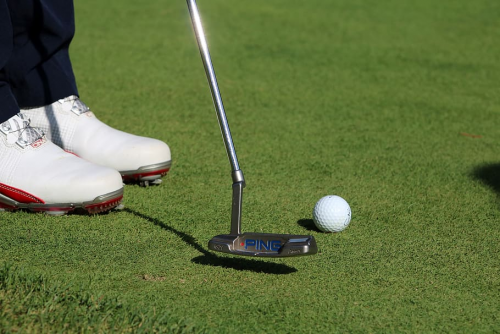Golf can seem impossible to get given the number of rules involved and, by virtue of that, could scare beginners away. Admittedly, it’s pretty hard to nail everything down at first glance.
Apart from the seemingly endless number of rules, there’s also a bit of jargon that could leave newbies somewhat confused. Once one gets the hang of it though, there’s really nothing to all of the detail. But someone feeling intimidated by the sport is pretty understandable given all of what appears to be complicated from the outside looking in.

Golf is one of the most popular sporting activities in the world and it’s no wonder many people are looking to get into it. There are several high-profile tournaments going on in various locations year-round and folks will find that betting odds from all of the major sportsbooks include picks from the top golf tourneys.
There will be plenty of questions when getting into golf, from what type of club one should select to the various ways of perfecting strokes. This guide seeks to let you in on some of the basics and will cover the most important aspects of getting started.
One of the first things needing attention is the group of clubs you pick. If you have plans to be really good, it makes sense to get the best equipment yet there’s still no need to break the bank. Persons new to golf would do well to source equipment that will allow them to develop their skills as best they could all while spending as little as they could. Once you’re comfortable with your swing, then go chase the top clubs available on the market.
It’s likely you do not need as many clubs as you think you do. A player is allowed to carry as many as 14 clubs but beginners won’t need that many while learning and should be able to get by with a driver, putter, sand wedge, 6-iron, 8-iron, pitching wedge and a fairway wood or hybrid. The aforementioned pieces are all pretty easy for newbies to handle.

Used and new titanium drivers could be found at a variety of stores for as little as $75, with putters costing a lot less online. Lots of physical locations - especially the big-name ones - have racks of discounted clubs, both used and new, available.
Balls are pretty important too. You should purchase them on a sliding scale, which is contingent on the number you lose in a round. You could start out with sets that are available for around $20 for a dozen, or if you’ve lost two sleeves or more. You could also choose brands depending on how they feel on the putter face when you strike them.
When you reduce the number of balls you lose to around three to five - yes, you will lose less as your accuracy improves - you could up your price to around $30 for 12. Don’t go to $40 a dozen until you’re losing less than a sleeve. A full guide to buying golf balls could be found right here.
Now, onto the action. Unfortunately, golf is not as simple as just putting a ball into a hole and you’re probably not going to know how to start out training if you’ve never played. That’s why it’s important to seek professional advice straight away.
Consult a trainer and set up a schedule that works to your convenience. It’s pretty commonplace to start stuff like this on your own then seek assistance when things start going wrong. When it comes to golf, however, it’s best to have guidance from the start.
It’s also best to keep a tight-range routine. It makes sense that you’d want to see how far you could hit a ball but do control the urge to simply swing your hardest at drivers. Of course, you could go that way with a few of them but going for max distance will put you off quickly. Begin by hitting a wedge or short iron to warm your muscles up with half swings before increasing the length and pace of your swings and moving to your middle. Slowly move on to your driver and, when you’ve hit a few balls, resume hitting with a short iron or wedge. This method will keep you grounded and in a good rhythm.
Given that at least 50 percent of your strokes will be within 50 yards of the green, practicing with the wedges and putter should take up half of your training time. As uneventful as this might sound, there’s a bright side as you could practice in your yard or even in your house. Set out some buckets or containers at various distances and try pitching balls into them, also setting good and bad lies much like you would come across on the golf course. You might not get the same type of speed you get on the greens as you get on your floor but you could still practice your aim by rolling balls into targeted areas.

